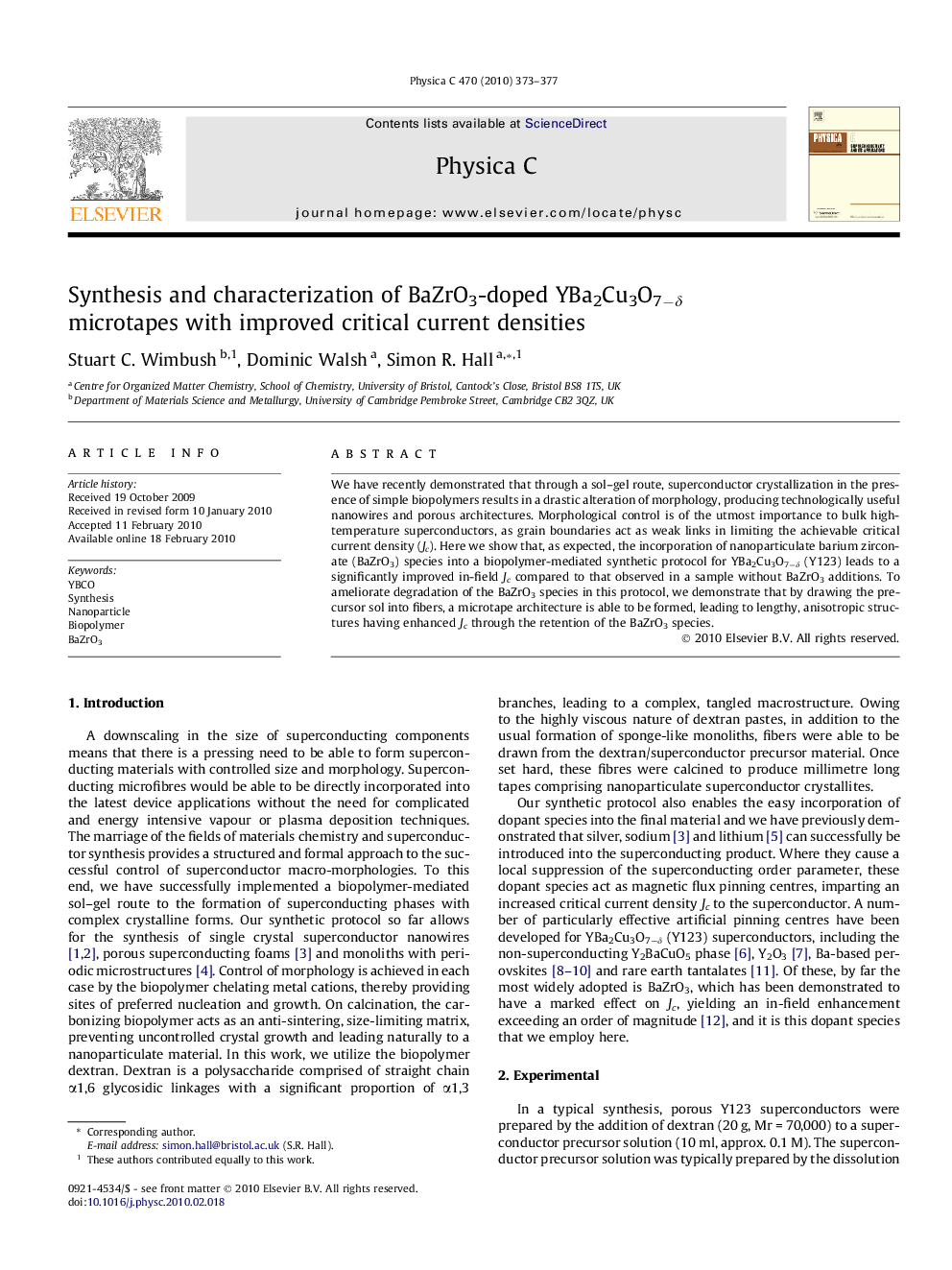| کد مقاله | کد نشریه | سال انتشار | مقاله انگلیسی | نسخه تمام متن |
|---|---|---|---|---|
| 1819049 | 1525758 | 2010 | 5 صفحه PDF | دانلود رایگان |

We have recently demonstrated that through a sol–gel route, superconductor crystallization in the presence of simple biopolymers results in a drastic alteration of morphology, producing technologically useful nanowires and porous architectures. Morphological control is of the utmost importance to bulk high-temperature superconductors, as grain boundaries act as weak links in limiting the achievable critical current density (Jc). Here we show that, as expected, the incorporation of nanoparticulate barium zirconate (BaZrO3) species into a biopolymer-mediated synthetic protocol for YBa2Cu3O7−δ (Y123) leads to a significantly improved in-field Jc compared to that observed in a sample without BaZrO3 additions. To ameliorate degradation of the BaZrO3 species in this protocol, we demonstrate that by drawing the precursor sol into fibers, a microtape architecture is able to be formed, leading to lengthy, anisotropic structures having enhanced Jc through the retention of the BaZrO3 species.
Journal: Physica C: Superconductivity - Volume 470, Issues 7–8, 1 April 2010, Pages 373–377